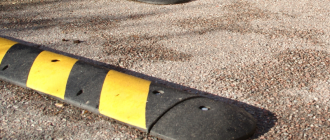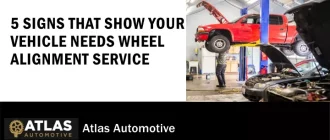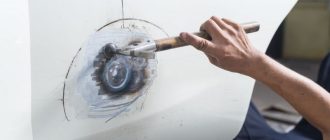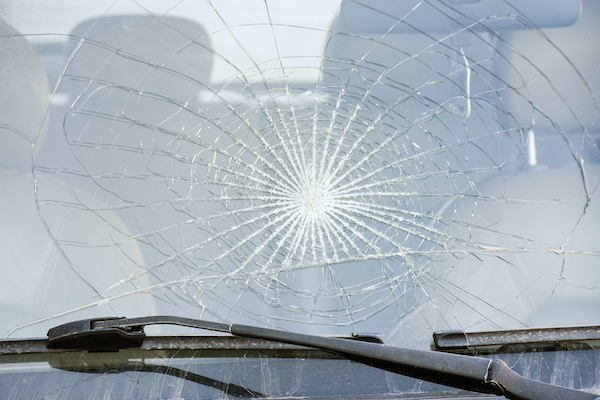
Is It Safe to Drive with a Cracked Windshield?
When it comes to the safety of your vehicle, a cracked windshield is something you should never ignore. Your windshield is not just a piece of glass, but an important safety feature that plays a crucial role in protecting you and your passengers. Therefore, driving with a cracked windshield can be risky and potentially dangerous.
Even a small crack in your windshield can compromise its structural integrity. While it may seem like a minor issue, it can quickly spread and weaken the entire windshield. This can result in reduced visibility, especially during bright sunlight or rainy conditions, increasing the risk of accidents on the road.
Furthermore, a cracked windshield is more susceptible to shattering upon impact. In the event of a collision or even a minor fender bender, the cracked windshield may fail to provide the necessary support and protection, putting you and your passengers at greater risk of injury. It is also worth noting that a cracked windshield can hinder the deployment of airbags, making them less effective in preventing serious injuries.
If you have a cracked windshield, it is imperative that you get it repaired or replaced as soon as possible. Ignoring the problem or putting off repairs can lead to further damage, higher repair costs, and compromised safety on the road. Don’t take the risk – prioritize your safety and the safety of others by addressing the issue promptly.
Is It Safe to Drive with a Cracked Windshield?
Driving with a cracked windshield can be a risky decision. While it may seem like a minor inconvenience, a crack in your windshield can actually pose significant safety hazards. Here are a few reasons why it’s important to address a cracked windshield before hitting the road:
- Visibility: A cracked windshield can obstruct your vision while driving, especially if it’s in your line of sight. Even small cracks or chips can cause glare or distortion, making it harder to see the road ahead. This can increase the risk of accidents, particularly in situations where you need to react quickly.
- Structural Integrity: The windshield is an important structural component of your vehicle. It helps to support the roof and provides stability in the event of an accident or rollover. A cracked windshield compromises this structural integrity and may not be able to withstand the force of a collision, putting you at greater risk of injury.
- Airbag Deployment: In the event of a collision, the windshield plays a crucial role in supporting the proper deployment of airbags. A cracked windshield may fail to provide the necessary stability, causing the airbags to deploy incorrectly or not at all. This can increase the severity of injuries in an accident.
- Ejection Risk: A cracked windshield is more likely to shatter upon impact, increasing the risk of passengers being ejected from the vehicle. This is especially dangerous in rollover accidents or high-speed collisions where the force of the impact is greater.
It’s important to note that the severity and location of the crack can impact the level of risk associated with driving. However, as a general rule, it is always recommended to address any cracks or chips in your windshield as soon as possible.
If you notice a crack in your windshield, it’s best to consult a professional auto glass repair service. They can assess the damage and determine the best course of action, which may involve repairing the crack or replacing the entire windshield.
Remember, prioritizing the safety of yourself and others on the road should always come first.
Importance of a Properly Functioning Windshield
When it comes to driving, safety should always be a top priority. One crucial component of a safe driving experience is a properly functioning windshield. A cracked or damaged windshield can pose serious risks and should not be ignored.
A windshield serves as a barrier between the driver and the outside elements. It not only protects passengers from wind, rain, and debris but also plays a vital role in maintaining the structural integrity of the vehicle. In the event of an accident or rollover, a cracked windshield may fail to provide the necessary support, increasing the likelihood of passenger ejection or roof collapse.
Furthermore, a cracked windshield can significantly impair a driver’s visibility. The lines and cracks in the glass can distort an individual’s view of the road, making it difficult to judge distances and perceive potential hazards. This lack of clarity can result in delayed reaction times and increase the chances of an accident.
Additionally, a damaged windshield is more susceptible to shattering upon impact. This can lead to a high risk of injuries from shattered glass fragments, not only for the driver but also for other occupants of the vehicle.
Regularly inspecting and maintaining your windshield is essential for safe driving. If you notice any cracks or chips, it is crucial to address them promptly by either repairing or replacing the windshield. Ignoring the problem can not only put your safety at risk but also lead to further damage, requiring more expensive repairs or even a complete windshield replacement.
Remember, a safe windshield means safer driving. Prioritize the condition of your windshield and take the necessary steps to ensure it is always in excellent shape. Your safety and the safety of others on the road depend on it.
The Dangers of Driving with a Cracked Windshield
While it may be tempting to continue driving with a cracked windshield, it is not safe to do so. A cracked windshield poses several dangers that can put you and your passengers at risk.
Firstly, a cracked windshield compromises the structural integrity of your car. The windshield is an essential part of the vehicle’s overall structure, providing support to the roof in case of a rollover accident. When the windshield is cracked, it weakens this support, making your car more susceptible to collapsing in a rollover or even during a front-end collision.
Secondly, driving with a cracked windshield can impair your vision. Even a small crack can distort your view of the road, making it difficult to accurately gauge the distance and speed of other vehicles. This can lead to accidents, especially in situations that require quick reflexes and precise judgment.
In addition to impaired visibility, a cracked windshield is more prone to shattering upon impact. The crack weakens the glass, making it more vulnerable to breaking, even with minor debris or a small stone hitting it. If the windshield shatters while you are driving, it can cause severe injuries from the flying glass shards and potentially distract you, leading to a loss of control of the vehicle.
Furthermore, a cracked windshield can interfere with the proper functioning of your airbags. During a collision, the airbag deploys at high speeds and relies on the windshield to provide support and direct it toward the driver or passenger. If the windshield is cracked, it may not be able to withstand the pressure from the airbag, which can result in the airbag failing to properly deploy or redirecting in a dangerous manner.
| – Compromises the structural integrity of the vehicle |
| – Impairs vision and depth perception |
| – Increases the risk of shattering upon impact |
| – Interferes with the proper functioning of airbags |
In conclusion, driving with a cracked windshield is not worth the risk. It is important to have any cracks or chips in your windshield repaired or replaced as soon as possible to ensure your safety on the road.
Risk of Reduced Visibility
Driving with a cracked windshield can significantly reduce visibility on the road, posing a risk to both the driver and other people on the road. The cracks can distort the view through the windshield, making it difficult to see clearly. This can be especially problematic during adverse weather conditions such as rain or snow, where good visibility is crucial for safe driving.
When driving, it is important to have a clear view of the road and any potential hazards or obstacles. A cracked windshield can obstruct this view, making it harder to spot pedestrians, cyclists, or other vehicles. This increased difficulty in seeing the road can increase the likelihood of accidents or collisions.
Furthermore, the cracks in the windshield can worsen over time due to vibration and temperature changes, further compromising visibility. A small crack can quickly turn into a larger one, increasing the risk of the windshield shattering completely. This can be extremely dangerous while driving, as shattered glass can cause serious injuries.
In conclusion, it is not safe to drive with a cracked windshield as it poses a risk of reduced visibility. It is important to prioritize safety and have any cracks in the windshield repaired or replaced as soon as possible to ensure clear vision and safe driving.
Impact on Structural Integrity
Driving with a cracked windshield may not seem like a big deal, but it can actually have serious consequences for the structural integrity of your vehicle. Even a small crack can weaken the windshield and compromise its ability to withstand impact.
The windshield plays a crucial role in the overall structural integrity of your car. It helps support the roof and acts as a barrier against flying debris and the force of a collision. When the windshield is cracked, its strength is significantly reduced, putting you and your passengers at risk.
Furthermore, a cracked windshield is more likely to shatter upon impact, which can lead to serious injuries. The sharp glass fragments can cause cuts and lacerations, and the lack of protection offered by a cracked windshield can result in ejection from the vehicle in the event of a crash.
It’s important to note that the windshield is not just there to protect you from outside elements. It also plays a role in deploying the airbags properly. If the windshield is weakened due to a crack, it may not provide enough support for the airbags to function effectively, putting you at a greater risk of injury in a collision.
In conclusion, driving with a cracked windshield is not safe and can have a significant impact on the structural integrity of your vehicle. It’s crucial to get any cracks or chips repaired or replaced immediately to ensure your safety on the road.
Increased Risk of Shattering
Driving with a cracked windshield is not safe. A cracked windshield is more susceptible to shattering, especially under certain circumstances. The crack weakens the overall structure of the windshield, making it more prone to breaking apart upon impact.
Even a small crack can compromise the integrity of the windshield, putting you at a greater risk in the event of an accident or collision. The cracked windshield may not be able to withstand the force of an airbag deployment or the weight of a rollover, potentially causing it to shatter and increase the likelihood of injury.
In addition, driving with a cracked windshield can obstruct your visibility, making it difficult to see the road ahead and react to potential hazards or obstacles in a timely manner. This further increases the risk of accidents or collisions.
It is important to address any cracks in your windshield as soon as possible to ensure your safety and the safety of others on the road. If you notice a crack, it is advisable to have it repaired or replaced by a professional auto glass technician.
Legal Consequences of Driving with a Cracked Windshield
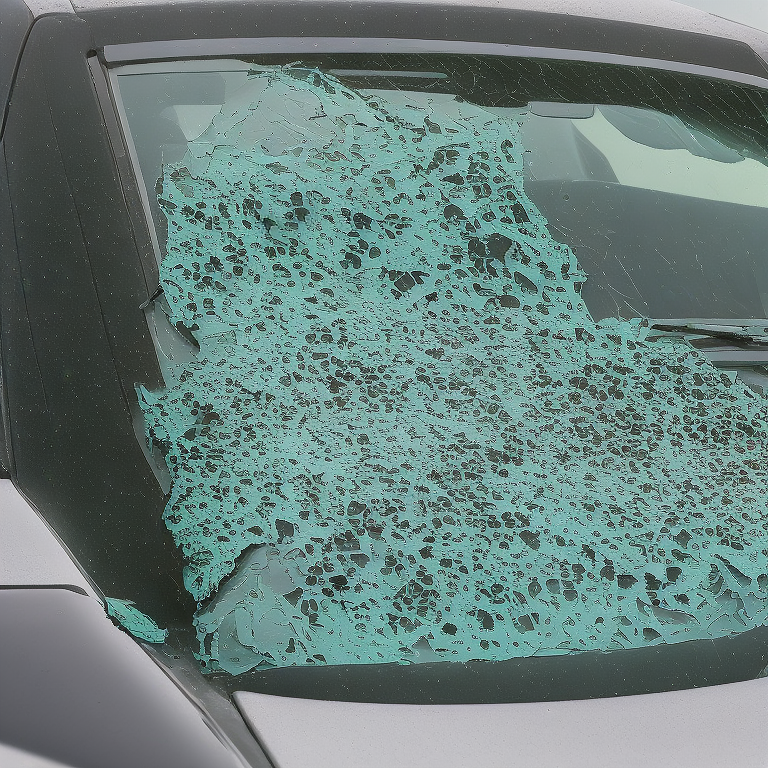
Driving with a cracked windshield may not be safe, but it can also have legal consequences. Many jurisdictions have laws that require drivers to maintain their vehicles in a safe and roadworthy condition, and this includes having an unobstructed and undamaged windshield.
When a windshield is cracked, it compromises the structural integrity of the glass and can impair a driver’s visibility. This poses a safety risk not only to the driver but also to other road users. As a result, law enforcement agencies take cracked windshields seriously and may issue citations or fines to drivers who fail to address the issue.
The specific legal consequences of driving with a cracked windshield can vary depending on the jurisdiction. In some cases, the authorities may issue a warning and provide a deadline to repair or replace the windshield. Failure to comply within the given timeframe can result in further penalties, such as fines or even license suspension.
In addition to the risk of legal consequences, driving with a cracked windshield can also affect insurance coverage. Many insurance policies require drivers to maintain their vehicles in a safe condition, and a cracked windshield may be considered a violation of this requirement. Consequently, the insurance company may refuse to cover any damage resulting from an accident if the windshield was already cracked at the time of the incident.
| – Citations or fines |
| – Deadline to repair or replace windshield |
| – Further penalties, such as license suspension |
| – Possible insurance coverage denial |
It is important for drivers to be aware of the legal consequences of driving with a cracked windshield and take appropriate action to address the issue promptly. This may involve repairing the crack or, in more severe cases, replacing the entire windshield. By doing so, drivers can ensure their own safety, comply with the law, and maintain their insurance coverage.
Common Causes of Windshield Cracks
A cracked windshield can be a safety hazard while driving, so it’s important to understand the common causes of windshield cracks. Here are a few factors that can contribute to windshield damage:
1. Flying debris: Rocks, gravel, and other objects can be kicked up by other vehicles and strike your windshield, causing a crack or chip.
2. Extreme temperature changes: Sudden changes in temperature can cause stress on your windshield, leading to cracks. This can happen when you blast hot air on a cold windshield or pour cold water on a hot windshield.
3. Improper installation: If your windshield was not installed properly, it can be more susceptible to cracks. Poor installation can weaken the glass and make it more prone to damage.
4. Structural weakness: Over time, the structure of a windshield can weaken, especially if it has already been repaired or replaced in the past. This can make your windshield more susceptible to cracks.
5. Hailstorms: Hail can cause significant damage to your windshield, resulting in cracks or even shattered glass.
It’s important to be aware of these potential causes and take precautions to protect your windshield. Regular maintenance, such as fixing small chips and cracks promptly, can help prevent further damage and ensure your safety while driving.
Types of Windshield Cracks and Their Severity
When it comes to the safety of driving with a cracked windshield, understanding the types of cracks and their severity is crucial. Here are some common types of windshield cracks:
- Long crack: A long crack is a single crack that extends across the windshield. It can be caused by a sudden impact or temperature changes. Long cracks can impair your vision and compromise the structural integrity of the windshield.
- Star crack: A star crack is characterized by multiple short cracks radiating from a central point. It is usually caused by a rock or other debris hitting the windshield. Star cracks can spread quickly and should be repaired as soon as possible.
- Bullseye crack: A bullseye crack is a circular crack with a dark center and a cone-shaped impact point. It is also commonly caused by an impact from a rock or other object. Bullseye cracks can obstruct your view and weaken the windshield.
- Edge crack: An edge crack occurs near the edge of the windshield. It can be caused by stress or pressure on the edges, such as a poorly installed windshield or a door slamming shut. Edge cracks can compromise the strength of the windshield.
- Combination crack: A combination crack is a combination of different types of cracks, such as a long crack intersecting with a star crack. Combination cracks can be particularly dangerous as they can spread rapidly and make driving unsafe.
The severity of a windshield crack depends on several factors, including the size, location, and extent of the crack. In general, any crack that impairs your vision or compromises the structural integrity of the windshield should be taken seriously and repaired or replaced as soon as possible. Even small cracks can worsen over time and lead to more significant damage.
Remember, driving with a cracked windshield can be unsafe and potentially illegal, depending on your state’s laws. It’s always best to consult with a professional windshield repair or replacement service to assess the severity of the crack and determine the appropriate course of action.
Factors to Consider in Deciding Whether to Drive with a Cracked Windshield
1. Safety: The most important factor to consider when deciding whether to drive with a cracked windshield is your safety. A cracked windshield can compromise the structural integrity of your vehicle and increase the risk of injury in an accident. It may also obstruct your vision, making it difficult to see the road clearly.
2. Legal requirements: Laws regarding cracked windshields vary by state and country. It is important to understand the legal requirements in your area. In some places, driving with a cracked windshield may be illegal and result in fines or penalties.
3. Severity of the crack: The severity of the crack is another factor to consider. If the crack is minor and not obstructing your vision, it may be safe to drive with it temporarily. However, if the crack is large or spreading, it is best to have it repaired or replaced as soon as possible.
4. Potential damage: Driving with a cracked windshield can worsen the crack and lead to additional damage. Vibrations from driving, changes in temperature, and road debris can cause the crack to expand. It is important to consider the potential for further damage and address it promptly.
5. Insurance coverage: Check your insurance policy to see if it covers windshield repair or replacement. Depending on your coverage, you may be able to have the crack fixed at little to no cost. This can help you make an informed decision about whether to drive with a cracked windshield.
6. Cost and availability of repair: Consider the cost and availability of windshield repair or replacement. If the crack is small and can be easily repaired, it may be worth taking care of it before driving. However, if a replacement is needed and it is costly or difficult to arrange, you may need to consider alternative transportation options.
7. Personal preference: Lastly, consider your own comfort and peace of mind. If driving with a cracked windshield makes you feel unsafe or anxious, it is best to have it repaired or replaced before getting behind the wheel. Your well-being should always be a top priority.
Temporary Solutions for Cracked Windshields
If you have a cracked windshield, it’s important to address the issue as soon as possible to ensure the safety of yourself and others on the road. While getting a professional repair or replacement is the best long-term solution, there are temporary measures you can take to ensure your safety in the meantime. Here are a few options:
1. Applying clear tape: If the crack in your windshield is small, you can use clear tape to prevent it from spreading further. Simply clean the area around the crack, dry it thoroughly, and apply a strip of clear tape over the crack. This can help to provide a temporary barrier and prevent the crack from getting worse.
2. Using a windshield repair kit: There are windshield repair kits available that can be used to fill in small cracks and chips. These kits typically include a resin that can be applied to the crack and then hardened with UV light. While this may not provide a perfect repair, it can help to strengthen the windshield temporarily and prevent the crack from spreading.
3. Avoiding extreme temperatures: Cracks in windshields can worsen due to extreme temperature changes. To minimize the risk of further damage, it’s important to avoid exposing your cracked windshield to sudden temperature fluctuations. This means avoiding parking your car in direct sunlight on hot days or using the defrost setting on your car’s heater with a cracked windshield.
4. Driving cautiously: When you have a cracked windshield, it’s crucial to drive with extra caution. The crack may obstruct your vision, especially if it’s in your line of sight. Make sure to maintain a safe following distance, reduce your speed, and be extra vigilant when changing lanes or navigating through traffic.
Remember, these temporary solutions are not meant to be long-term fixes for a cracked windshield. It’s important to have the crack repaired or the windshield replaced by a professional as soon as possible to ensure your safety on the road.
Question-answer:
Can I drive with a small crack in my windshield?
Yes, you can drive with a small crack in your windshield as long as the crack does not obstruct your vision and does not violate any local laws or regulations. However, it is recommended to get the crack repaired as soon as possible to prevent it from spreading.
Is it dangerous to drive with a cracked windshield?
Driving with a cracked windshield can be dangerous as the crack can compromise the structural integrity of the windshield. In the event of a collision or sudden impact, the windshield may not provide the necessary protection. Additionally, the crack can obstruct your vision and impair your ability to see the road clearly. It is best to get the crack repaired or replace the windshield.
How do I know if I need to repair or replace my cracked windshield?
The decision to repair or replace a cracked windshield depends on the size, location, and severity of the crack. Small cracks that are less than 6 inches long can usually be repaired, while longer cracks or cracks that extend to the edge of the windshield may require a replacement. It is best to consult with a professional windshield repair service to determine the best course of action.
What are the consequences of driving with a cracked windshield?
Driving with a cracked windshield can have several consequences. First, it can compromise your safety as the crack can weaken the windshield’s ability to protect you in the event of a collision. Second, it can obstruct your vision and impair your ability to see the road clearly, increasing the risk of accidents. Additionally, driving with a cracked windshield may be against the law in some jurisdictions and can result in fines or citations.

